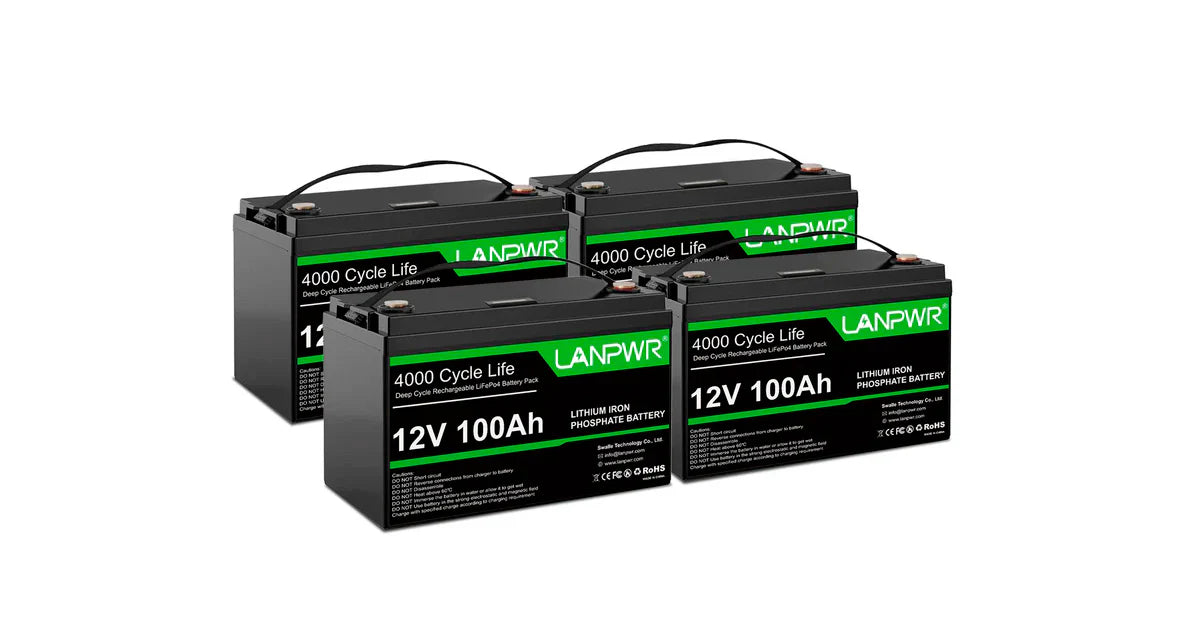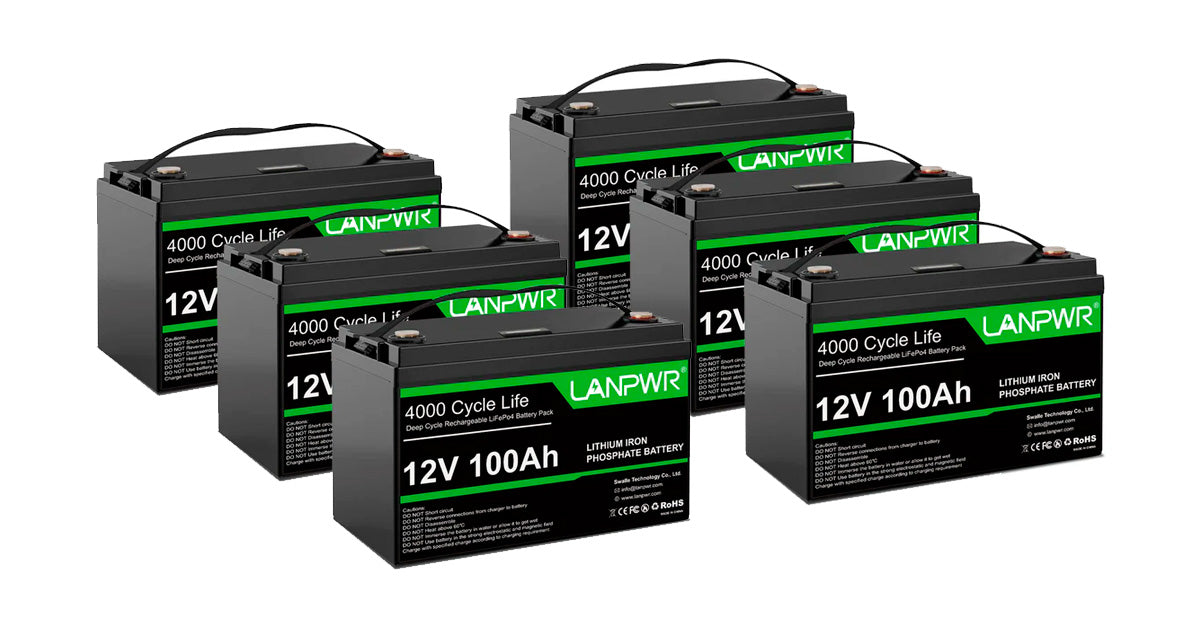Due to their safety, durability, and efficiency, LiFePO4 (Lithium Iron Phosphate) batteries have become increasingly popular in portable power stations. Although part of the lithium-ion family of batteries, LiFePO4 batteries stand apart due to their specific chemical makeup and performance characteristics. This article offers insight into their storage capacities so you can maximize this exciting technology and take full advantage of this groundbreaking advancement.
What Is a LiFePO4 Battery?
LiFePO4 batteries use lithium iron phosphate as the cathode material and a graphitic carbon electrode with metallic backing as their anodes for maximum benefit over traditional lithium-ion batteries, including:
Benefits of LiFePO4 batteries
Improved Safety: LiFePO4 batteries offer excellent thermal and chemical stability, decreasing the risks of overheating and thermal runaway.
Longer Lifespan: LiFePO4 batteries have greater charge-discharge cycle endurance before their capacity falls below 80% of their original value.
LiFePO4 batteries offer greater thermal stability as they operate across a wider temperature range without degrading rapidly. They also have excellent eco-friendliness characteristics, as iron is less toxic than cobalt or nickel, making these lithium-ion batteries eco-friendly alternatives.
Advantages of LiFePO4 Batteries in Portable Power Stations LiFePO4 batteries make an excellent addition to portable power stations due to their unique properties:
Durability: They have proven capable of withstanding high charge/discharge cycles with minimal degradation over time.
Safety: Because LiFePO4 batteries feature increased thermal stability, they're safer to use in various environmental conditions and less likely to catch fire or explode if damaged. Efficiency: LiFePO4 batteries offer consistent voltage output during discharge, giving a steady power source until it is fully used.
Weight Advantages: LiFePO4 batteries may be slightly heavier than other lithium-ion cells; however, their safety and lifespan advantages often make up for any extra heft. When stored in portable power stations, they are great power sources!
Tips for Maximizing LiFePO4 Battery Storage in Portable Power Stations
Proper storage and maintenance practices are vital in optimizing performance and lifespan for LiFePO4 batteries:
Ideally, LiFePO4 batteries should be stored at between 50% and 60% charge, as this helps preserve their health over long periods of inactivity.
Temperature Considerations: Store your portable power station in a cool and dry environment to preserve battery performance and longevity. Extreme temperatures (both hot and cold) can negatively impact its lifespan.
Regular Cycling: To prevent capacity loss from battery non-use, it is advisable to cycle (charge and discharge completely) the battery every 3 - 6 months with full charge/discharge cycles (total charges/full discharges).
Long-Term Storage: To extend battery storage life and compensate for natural discharge over time, recharge every three to six months until the battery reaches its optimal charge level for storage use.
How to Prolong a Lifespan of LiFePO4
Here are essential tips for creating maximum storage use from LiFePO4 battery packs installed into portable power stations with portable LiFePO4 battery packs, thus prolonging their lives and maximizing lifespan.
- Upkeep an Appropriate Charge Level
LiFePO4 batteries tend to experience lower self-discharge than other lithium-ion batteries, yet it remains vital that their optimal charge levels be preserved; avoid completely discharging them by keeping their charge above 20%.
LiFePO4 batteries tend to be less vulnerable to being fully charged; maintaining between 30% and 80% charge levels should help preserve their health over time.
- Maintain Temperature Stability
Temperature control is integral to maintaining battery health. For best results, store in cool, dry locations where temperatures don't fluctuate too widely.
Avoid placing your power station directly under direct sunlight or a hot vehicle, as high temperatures may accelerate LiFePO4 battery degradation.
LiFePO4 batteries should be stored between 32degF and 77degF (0degC to 25degC); temperatures outside this range could decrease their life and efficiency, thus shortening lifespan and efficiency.
- 3. Avoid Deep Discharge Cycles
Deep discharges can be detrimental over time: While LiFePO4 batteries tend to tolerate deep discharges better than other types, too often, discharging fully will still shorten their lifespan and shorten your warranty term. To maximize battery longevity and prolong its lifespan before charging again, discharge to 20-30% before recharging properly before storage.
- Charge Correctly Before Storage
If you intend to keep your power station for an extended period, first charge its LiFePO4 battery to approximately 50-60% before storing it; this level has been proven effective at minimizing degradation. After storing it, monitor it regularly to maintain near this 50-60% level - whether by checking, charging, or both as required to remain near this threshold level.
- Use Compatible Chargers
Compatible chargers must be used: Ensure that the charger used with LiFePO4 batteries is suitable, as using an incompatible one could damage them and lead to lower capacity and safety risks. Finally, regularly cycle them, as this can extend the battery lifespan and ensure optimal results. Ideally, only chargers explicitly designed for LiFePO4 should be used for optimal results, and regular cycling is advised for best and optimal capacity results.
- Regular Cycling of Batteries for Improved Results and Longevity
Keep Your Battery Alive: For optimal battery health and to preserve battery chemicals, cycling your battery from full charge to discharge every three to six months is best practice for inactive batteries that are no longer used regularly.
- Protect Battery Terminals by Maintaining Cleanliness
Keeping their terminals clean for batteries not regularly in use may help ensure optimal results from charging cycles and preserve the health and lifespan of both parties involved.
Frequent cleaning of battery terminals will prevent build-up that could impede connections and increase resistance, thus decreasing battery lifespan and growing resistance.
Use a dry cloth to gently wipe down terminals, and avoid using any corrosive cleaning agents. Now that we understand how essential portable power stations are to battery storage let's discuss strategies for optimizing their performance and lifespan.
Conclusion
LiFePO4 batteries in portable power stations offer a robust, safe, and reliable solution for your power needs, whether for outdoor activities, emergency backup, or daily use. By understanding the characteristics and storage requirements of LiFePO4 batteries, users can ensure optimal performance and extend the lifespan of their portable power stations.














Leave a comment
This site is protected by hCaptcha and the hCaptcha Privacy Policy and Terms of Service apply.